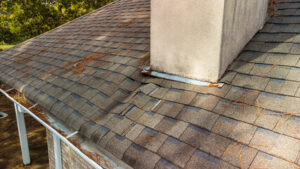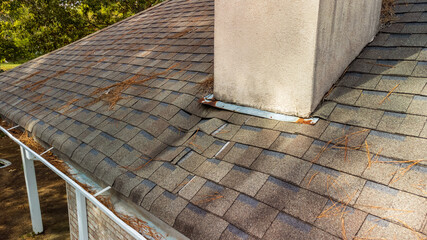A roof leak in the rain is more than a nuisance. It can lead to water damage, increased energy bills, mold, and mildew. Click https://www.springvalleyroofing.com/ to learn more.
Many assume that roof coatings can help prevent leaks, but they can only protect a home once the leak is already there. The best way to avoid a leaking roof in the rain is to take the following steps:

There are a few telltale signs that you leak in your roof. Water stains on the ceiling or walls are common and are usually caused by water leaking through the roof and into the home. Another common sign of a leak is pooled water that forms on the floor or other surfaces in the house. If you notice any of these symptoms, it is important to act quickly to minimize the damage.
The first step to take in the event of a leak is to turn off the water supply at your home. This will prevent any further water damage and allow you to start working on fixing the leak. Put up plastic barriers on any affected areas of the wall or floors to prevent moisture from seeping through.
Next, try to find the source of the leak. This can be difficult as water travels long distances before it drips or comes through the ceiling. It would be best to start by looking for any items that penetrate the roof, such as plumbing pipes or vents. These can be located several feet away from the actual leak site. Look for cracks or holes in the ceiling, especially around areas previously damaged by weather or debris.
If you can’t find the source of the leak, you can try running a hose up against the ceiling in the area where the water is coming through. The hose will create a pressure point showing you where the leak originated. This method can be dangerous, so you should only use it if you are confident enough to do so.
Once you have identified the leak, you should clear the area before applying any waterproof coatings. The site should be cleaned thoroughly, using a solvent cleaner like Adisolve to remove any oil, grease, bitumen, or other stubborn deposits that the rainwater can leave behind. Once the area is clean, you can apply a product like Adiseal to stop the leak.
If water has begun to leak through the ceiling into your home, the first step is to create a waterproof barrier. This will stop the water from spreading further and damaging drywall or insulation, but it also protects you from mold growth. Mold can be a health concern and ruin wall and floor coverings, wood framing, and ceiling tiles. Water can also short-circuit electrical wires and cause fire hazards. This may increase your energy costs and reduce the value of your home.
The most common way water gets into your home is through cracks in your roof. This happens when the shingles lose their adhesiveness and allow water to seep in. This can be caused by aging, poor installation, and weather conditions. If you notice cracks in your roof, fixing them as soon as possible is important.
If you cannot fix the roof leak, it is best to cover it with a plastic barrier. This can be purchased at most hardware stores. If you have one, it is a good idea to lay a piece of plywood across the joists in your attic or crawl space. This will prevent the leaking water from getting onto the drywall between posts. This method will also help you identify where the leak is coming from.
A sealant that contains rubber, silicone, or polyurethane is a good choice for creating a waterproof barrier. These types of bonds are designed to withstand moisture and deflect UV rays, which can cause damage to your roof. You will want to select a sealant recommended for your specific type of roof.
If your roof is flat or has low slopes, it will need a different sealant to provide a strong bond and hold up under heavy rains. Using glue that can reflect sunlight is also a good idea, as this will keep your house cooler and decrease air conditioning usage. Typically, acrylic sealants are best for flat roofs, while silicone or rubber sealants are better for sloped ceilings.
The next step is to find the source of the leak. This can be tricky, especially if your home has a high ceiling or a dormer that is difficult to access. One good way to do this is to pour water over the affected area and look for a spot where it pools. This can help you pinpoint the exact location of a roof leak and indicate whether there is a serious issue, such as a missing shingle.
Another good way to check is to walk around your home with a flashlight and examine the framing in areas where there could be a leak. This can include chimneys, old flashing, vents, skylights, or pipes that enter through the roof. Look for dampness or discoloration and signs of rust or other damage.
Once you have located the source of the leak, it is time to take action. If it is still raining, your priority is to keep as much water from entering your home as possible. Place buckets or other containers beneath the leaky area, and make sure to regularly monitor them and empty them so that they do not fill up and start leaking onto your floors and furniture.
If it is safe to do so, you can create a barrier on the inside of your ceiling by placing plywood across the joists where the leak appears and then adding a bucket to catch any dripping water. However, this should be a temporary measure, and you will need to have a roofing contractor examine your roof as soon as possible to make permanent repairs.
If it is safe, another way of creating a temporary barrier on the inside of your roof is to use roofing tar and plywood to create a patch. This can be done from the inside, and you can find these materials at your local hardware store or home improvement center. Be sure to follow the directions on the label, and remember to use a caulking gun to apply the tar and caulk the holes and seams you have created.
One of the most important things you can do to keep your home dry is to ensure rainwater drains away from your house. If it doesn’t, water may collect inside your walls and can cause mold and mildew. You can install gutters and other drainage systems that divert rainwater from your house to prevent this. You should also regularly inspect your roof for areas where water may get through and repair them immediately.
Another way to prevent leaks is by installing a waterproof membrane on your roof. This will help protect your roof from leaks and keep standing water from damaging the rest of your home. In addition, you should regularly check your gutters and remove any debris that might clog them. Finally, trim any trees or shrubs overhanging your roof, as they can cause water damage if wet.
If you cannot locate the leak’s source, you can still minimize the damage by covering up the area with a waterproof tarp. This will help trap any leaking water and allow you to focus on repairs once the weather has cleared. Be sure to use a tarp large enough to cover the entire leak-affected area.
Leaks from the attic are often the most difficult to track down because the water will drip down several different surfaces before it hits the ceiling below. If you have good access to your attic, examine the area with a flashlight and look for any signs of water or moisture. You should also check the seams of your roof boards and any beams or trusses in the attic for signs of moisture or water.
If you are having trouble finding the source of a leak, try using a waterproof sealant such as Adiseal. This product comes as tape that you can apply to any cracks or holes in your roof. It’s easy to use and is available in various colors, making it simple to match the color of your roof. It’s also resistant to both rain and UV rays, helping to prevent fading over time.

